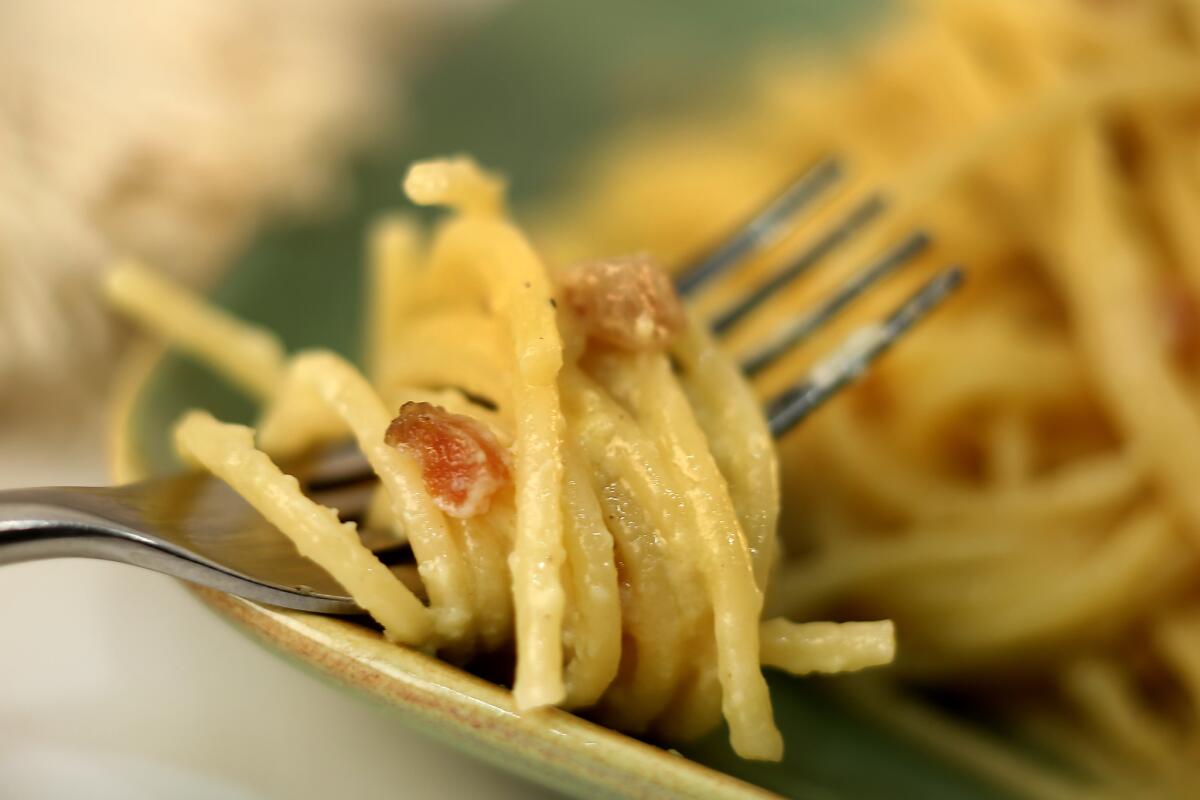The complicated simplicity of spaghetti carbonara

Spaghetti carbonara is one of the simplest dishes to make — it takes only five ingredients, not including seasoning, and is done in less time than it takes for the noodles to cook. But sometimes the simplest dishes are the hardest to get right, and spaghetti carbonara is definitely one of those.
Fry cubed guanciale, add cooked noodles, stir in eggs beaten with grated cheese. When done well, you’ve made a wonderfully creamy sauce rich with the flavor of cured pork and cooked eggs. But getting the mixture just right is tricky. If the noodles are too hot, the eggs will curdle when you add them. If they’re too cool, the eggs will remain raw.
Cooks have tried different tricks to get around that. You’ll find carbonara recipes made with butter and cream, and even with cream cheese. Those are just about guaranteed not to curdle but have little to do with a proper carbonara.
The one trick I’ve found that works while still retaining the essential character of the dish is adding a little of the hot pasta cooking water if the dish starts to go wrong. If the eggs are still a little raw, the hot water will finish cooking them; if the eggs have curdled, stirring in a little water will help smooth them out.
There’s still plenty of room for variation. Maureen B. Fant and Oretta Zanini De Vita, coauthors of the terrific “Sauces & Shapes: Pasta the Italian Way,” disagree on whether the guanciale should be cooked in olive oil or started dry in a cold pan, as you would bacon. (I’m with De Vita and favor a bit of oil to get things started.) For his carbonara, Gino Angelini of Osteria Angelini cuts the guanciale in larger cubes — up to 1/2 inch — so they’ll retain more of their character. Of course, he’s using his spectacular house-cured guanciale.
Some cooks use whole eggs, while others use just the yolks for a richer, creamier texture. For an everyday meal, I prefer the lighter sauce made with whole eggs.
If you can’t find guanciale, pancetta can be substituted, though it’s a bit more peppery. And while the idea may make Romans blanch, no less an authority than the late Marcella Hazan suggests slab bacon as an alternative.
Cheese is another variable. Traditionally, pecorino Romano is preferred, but that can be too salty. A combination of pecorino and Parmigiano-Reggiano is a bit less assertive. Use as much or as little black pepper as you like, but remember that this is at heart a rustic dish and that flowery pepper heat offsets the richness nicely.
And finally, you don’t need to use spaghetti at all. Some cooks prefer the extra chewiness of bucatini — like a thick spaghetti noodle with a hole going down the center. Cream cheese, however, remains beyond the pale.
[email protected]
Follow me on Twitter @russ_parsons1
More to Read
Eat your way across L.A.
Get our weekly Tasting Notes newsletter for reviews, news and more.
You may occasionally receive promotional content from the Los Angeles Times.











